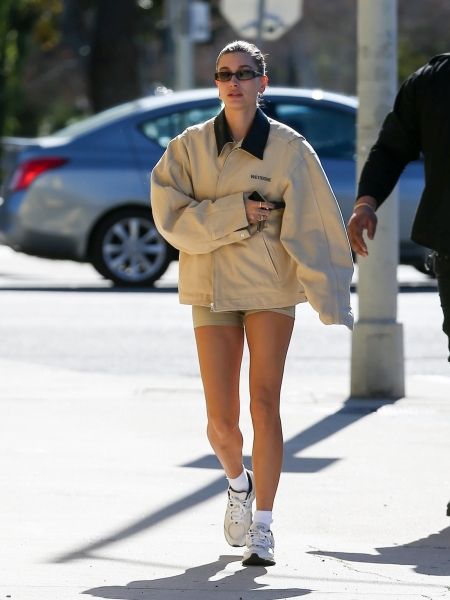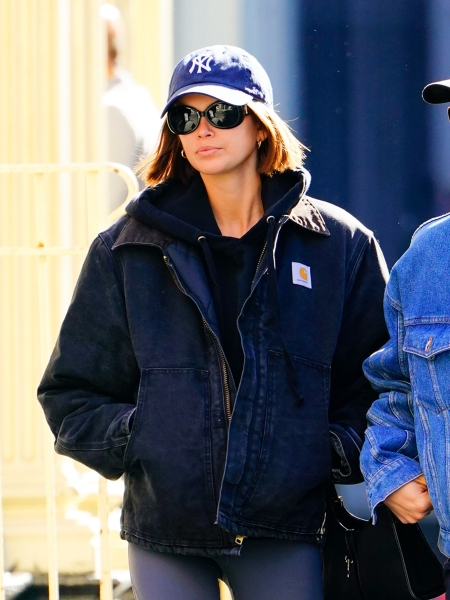
Earlier this month, Hailey Bieber drove to dinner in Beverly Hills in her Tesla cybertruck wearing a work jacket that retails for $1,700. This isn’t the first time Bieber has added clothing traditionally made for laborers to her wardrobe—she’s previously been spotted in a $1,200 We11done chore coat. It’s no wonder celebrities, including Bieber, Jaden Smith, Kaia Gerber, and Brooklyn Beckham have all bought into the trend: workwear brands are jumping at the chance to cash in on the hype with luxury collaborations, too. Junya Watanabe has a longstanding partnership with Carhartt; In June 2023, Marni x Carhartt WIP produced a line of funky pieces, from the $770 floral jacket to the $354 two-toned trousers; Prada, Miu Miu, and Louis Vuitton all showed chore jackets in recent shows.
But there is a certain incongruity in owning luxury pieces that adopt lower class aesthetics, especially when the wearer comes from such a privileged background. It raises the question: what should the upper class’s relationship to utilitarian clothing look like?
“As high-end labels strive to be both unavailable and everywhere at once, the very concept of desirability is still built on the haves and the have-nots,” my British Vogue colleague Daniel Rodgers wrote in Dazed. “That dissonance, between what fashion sells and who it sells it to, has been the ire of social media, which often warns against the perils of fetishizing working-class aesthetics.”
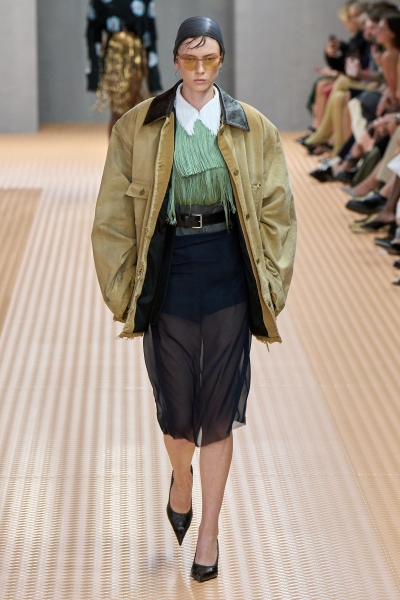
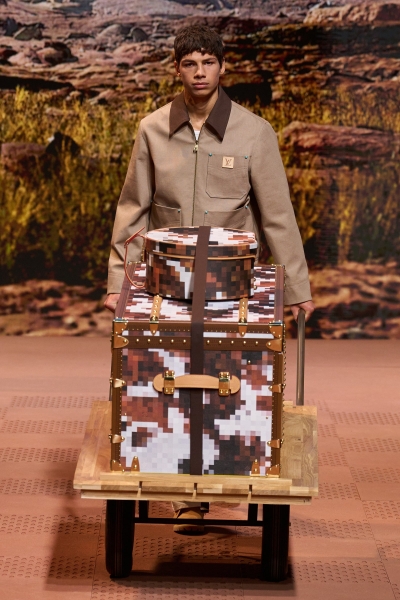
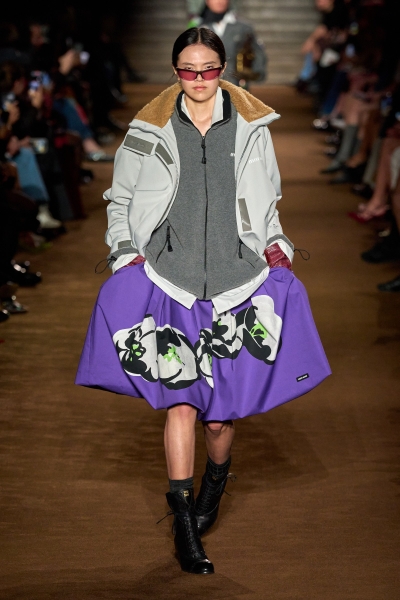
Anybody who went to a liberal arts college, or had an unemployed roommate with an excessive Doordash habit knows that there is a tendency for wealthy people to cosplay as poor, or to add unnecessary caveats as a means of justifying their lifestyles. There is obviously nothing wrong with coming from financial security—especially given that a core value of parenting is trying to provide the best life possible for children. This is also not to suggest that rich people have not experienced suffering. But wealth cushions any physical and emotional hardships that could otherwise be coupled with financial distress.
Class appropriation lies in much murkier territory than cultural appropriation. Perhaps this is because those who so quickly (and rightly) decry cultural appropriation are often the ones donning the Carhartt barn jackets and Dickies cargos without cutting their teeth on construction sites or spending grueling summer days detasseling corn. Like with any fashion trend, the increased popularity of utilitarian clothing over the past few years has also encouraged celebrities to give it a try. But when the exorbitantly wealthy try workwear the look’s cool, laidback intentions seem to appear more like a costume.

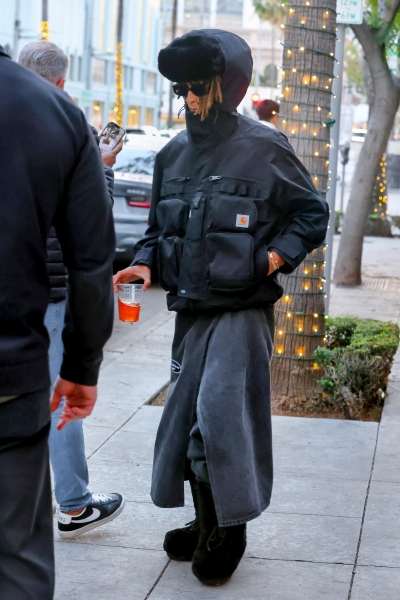

Of course, it’s never so black-and-white to suggest that just because someone is rich, they should automatically ban themselves from wearing these garments, especially because they are so utilitarian. Some even argue that the original meaning of utilitarian clothing is so far gone that we’ve evolved past literal interpretations of these garments.
“What’s cool about this era of fashion is that everything kind of belongs to everyone,” says GQ fashion writer Samuel Hine. “I think we’ve moved way beyond the idea that certain styles of clothing are off-limits to those who don’t come by them naturally. Virgil Abloh in particular swept away notions of ownership in fashion, and I don’t think it’s a coincidence that he often wore Dickies and Carhartt.” (Still, one can’t help but notice that Pharrell Williams only dressed models in work jackets when they were performing manual labor—in this case pushing luggage carts.)
At the end of the day, there doesn’t appear to be a hard and fast answer. In dictating who can wear certain items of clothing, we inadvertently make the class divide more stark. “Workwear’s appeal is universal, and its popularity in fashion—especially in menswear—has coincided with an increased awareness of how important quality and value is in clothing,” Hine says. But it’s up to each individual to interrogate their own relationship to class and clothing. He adds: “Of course, if you decide to buy a luxury riff on a Carhartt jacket for thousands of dollars, that’s between you and God.”
